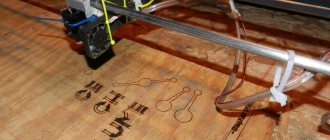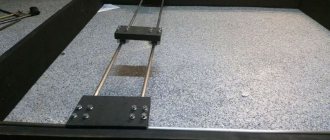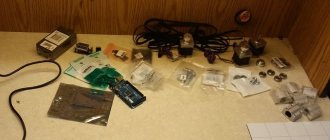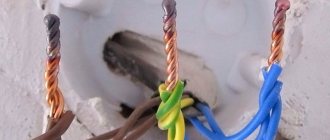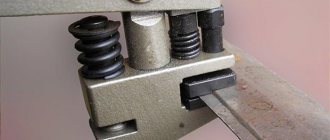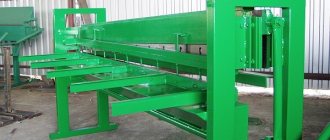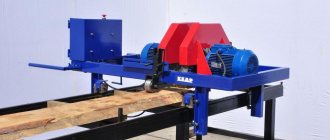Laser cutting is the most advanced, but also expensive technology. But with its help you can achieve results that are beyond the power of other metal processing methods. The ability of laser beams to give any material the desired shape is truly limitless.
The unique capabilities of the laser are based on the following characteristics:
- Clear directionality - due to the ideal directionality of the laser beam, the energy is focused at the point of impact with a minimum of losses,
- Monochromaticity - the laser beam has a fixed wavelength and a constant frequency. This allows it to be focused with ordinary lenses,
- Coherence – laser beams have a high level of coherence, so their resonant vibrations increase the energy by several orders of magnitude,
- Power - the above properties of laser beams ensure that the energy of the highest density is focused on a minimal area of material. This allows you to destroy or burn through any material in a microscopically small area.
Design and principles of operation
Any laser device consists of the following components:
- energy source;
- working body that produces energy;
- an optical amplifier, a fiber-optic laser, a system of mirrors that amplify the radiation of the working element.
The laser beam produces precise heating and melting of the material, and after prolonged exposure, it evaporates. As a result, the seam comes out with an uneven edge, evaporating material is deposited on the optics, which reduces its service life.
To obtain smooth thin seams and remove vapors, the technique of blowing melt products from the laser impact zone with inert gases or compressed air is used.
Factory laser models equipped with high-grade materials can provide good indentation rates. But for household use they are too expensive.
Models made at home are capable of cutting into metal to a depth of 1-3 cm. This is enough to make, for example, parts for decorating gates or fences.
Laser cutting of metal
Depending on the technology used, there are 3 types of cutters:
- Solid state. Compact and easy to use. The active element is a semiconductor crystal. Low-power models have quite affordable prices.
- Fiber. Glass fiber is used as the radiation and pumping element. The advantages of fiber laser cutters are high efficiency (up to 40%), long service life and compactness. Since little heat is generated during operation, there is no need to install a cooling system. It is possible to produce modular designs that allow you to combine the power of several heads. The radiation is transmitted via flexible optical fiber. The performance of such models is higher than solid-state ones, but their cost is higher.
- Gas. These are inexpensive but powerful emitters based on the use of the chemical properties of gas (nitrogen, carbon dioxide, helium). With their help you can weld and cut glass, rubber, polymers and metals with a very high level of thermal conductivity.
Functions of gas in the machine
In atmospheric conditions, the use of such a machine without gas actually reduces all its energy to zero, as we discussed above, so the use of gas as an auxiliary substance significantly speeds up the cutting process and makes the use of a machine for cutting metal with a laser even more versatile. When processing metal, ordinary oxygen can perform a number of important functions: at the initial stage of cutting, it oxidizes the metal, which reduces its reflective properties; oxygen supports the combustion of metal under the influence of a powerful laser beam, and additional heat enhances the effect of the beam, increasing the speed of laser cutting of metal; with the help of oxygen under pressure, the remaining material and its combustion product are removed and removed from the treatment area, which facilitates gas access to the new treatment area.
Homemade household laser
To carry out repair work and manufacture metal products at home, do-it-yourself laser cutting of metal is often required. Therefore, home craftsmen have mastered manufacturing and successfully use hand-held laser devices.
In terms of manufacturing cost, a solid-state laser is more suitable for household needs.
The power of a homemade device, of course, cannot even be compared with production devices, but it is quite suitable for use for domestic purposes.
How to assemble a laser using inexpensive parts and unnecessary items.
To make a simple device you will need:
- laser pointer;
- battery-powered flashlight;
- CD/DVD-RW writer (an old and faulty one will do);
- soldering iron, screwdrivers.
How to make a handheld laser engraver
What is a CNC laser cutting machine?
A laser cutting machine has a lifting table designed to hold and move the workpiece relative to the beam. The movement can be linear about the vertical coordinate axis.
Reference : the machine has different lifting capacity, area and can be moved using mechanical or electric drives.
Laser cutter manufacturing process
- You need to remove the red diode from the computer disk drive, which burns the disk when recording. Please note that the drive must be a write drive.
After dismantling the upper fasteners, remove the carriage with the laser. To do this, carefully remove the connectors and screws.
To remove the diode, you need to unsolder the diode mountings and remove it. This must be done extremely carefully. The diode is very sensitive and can be easily damaged by dropping it or shaking it sharply.
- The diode contained in it is removed from the laser pointer, and the red diode from the disk drive is inserted in its place. The pointer body is disassembled into two halves. The old diode is shaken out by picking it up with the tip of a knife. Instead, a red diode is placed and secured with glue.
- It is easier and more convenient to use a flashlight as a body for a laser cutter. The upper fragment of the pointer with a new diode is inserted into it. The glass of the flashlight, which is an obstacle to the directed laser beam, and parts of the pointer must be removed.
Laser pointer
When connecting the diode to battery power, it is important to strictly observe the polarity.
- At the last stage, they check how securely all the laser elements are fixed, the wires are connected correctly, the polarity is observed and the laser is level.
The laser cutter is ready. Due to its low power, it cannot be used when working with metal. But if you need a device that cuts paper, plastic, polyethylene and other similar materials, then this cutter is quite suitable.
Protecting the fiber laser from reflected beams
It is important to understand that certain metals pose a certain danger to the laser with which they are processed. This is due to their characteristic significant reflection coefficients.
The advantage of IPG products is that they are designed to protect fiber emitters from reflected rays.
Lasers of this brand are offered in two protection options:
- LK - have a passive system, the sensors of which catch reflections and inform the operator about the identified danger;
- LS is an active system. Allows you to level out identified dangerous reflections. You don't have to interrupt your work for this.
Machines of the second type are the best solution for processing workpieces made of materials such as aluminum, brass, mirror stainless steel, and copper.
Another indisputable advantage of IPG products is a better Gaussian beam, which provides a more stable cut. However, this does not affect the thickness of the workpieces being cut and the cutting speed.
How to increase laser power for metal cutting
You can make a more powerful laser for cutting metal with your own hands by equipping it with a driver assembled from several parts. The board provides the cutter with the required power.
The following parts and devices will be needed:
- CD/DVD-RW writer (an old or faulty one will do), with a writing speed of more than 16x;
- 3.6 volt batteries – 3 pcs.;
- 100 pF and 100 mF capacitors;
- resistance 2-5 Ohm;
- collimator (instead of a laser pointer);
- steel LED lamp;
- soldering iron and wires.
You cannot connect a current source to the diode directly, otherwise it will burn out. The diode draws power from current, not voltage.
Laser collimator
The beams are focused into a thin beam using a collimator. It is used instead of a laser pointer.
Sold at an electrical goods store. This part has a socket where the laser diode is mounted.
Deciding on the required power
To make an informed decision, you should perform a small comparative analysis of the capabilities of emitters of various powers. Let these be devices: 0.5W, 1.5W, 3.0W, 6.0W.
- A 0.5 kW laser is capable of cutting a metal sheet 1 mm thick, performing this work at a speed of about 12 m/min. But the maximum thickness of the workpiece for such a device is 3 mm. In this case, the cutting speed will drop to 0.7 m/min.
- A more powerful emitter of one and a half kilowatts will cope with a millimeter sheet much faster. Processing is possible at speeds ≤26 m/min. It cuts a workpiece 3 mm thick with high quality, moving at a speed of 4 m/min. The maximum available thickness for this device is 6 mm. The cutting speed will drop, in this case, to 1 m/min.
- Three kilowatts is enough to cut millimeter workpieces at speeds of up to 34 m/min. A similar machine works with a 3 mm sheet, moving at a speed of 8.5 m/min. A thickness of 6 mm is more difficult to achieve. The speed drops to 3 m/min. The maximum thickness possible for processing increases to 12 mm. and the cutting speed drops to 0.5 m/min.
- The six-kilowatt emitter is the undisputed leader in “high-speed modes”. A 1 mm sheet is cut at speeds that can reach 41 m/min. 3mm is processed with a movement of (15-16) m/min. 6 mm thickness is processed slower, only 5 m/min. And the maximum thickness of the workpiece is 16 mm, 0.6 m/min.
It should be borne in mind that the processing speed directly depends not only on the thickness of the workpiece, but also on the material from which it is made. As well as the gas used during the work process.
Examples:
- emitter with a power of 500 W, cuts a stainless steel sheet 1 mm thick, moving with V≤12 m/min;
- the same laser will cut through a carbon steel sheet of similar thickness (with oxygen) at V≤8 m/min;
- if you have to process a millimeter sheet of copper, aluminum (nitrogen) on the same machine, the speed will drop to 5 m/min.
Another paired comparison of characteristics that is recommended to evaluate is the size of the workpiece being processed and its thickness.
To reach maximum cutting speed, the machine needs a certain amount of time and free space.
This explains the almost imperceptible difference in the operation of a 3.0 kW and 1.5 kW fiber laser in the manufacture of medium and small parts from thin-sheet workpieces. The equipment does not have time to reach the maximum available speed limit.
The situation changes dramatically when the cut is performed on a long, large workpiece. In this case, a noticeable difference is visible even when working with thin sheet metals.
And, with increasing thickness of the material being processed, the difference becomes colossal. This thickness must first be punched.
Knowing the relationship between power and cutting speed and what maximum thicknesses the emitter can take, you can decide which choice will be optimal for you. Because sometimes it is more profitable to take a more powerful emitter because it will work faster.
Despite the fact that 6 kW is enough to solve most problems, Lasercut is ready to manufacture a machine with an emitter of up to 25 kW.
But here it is worth noting that such equipment requires a special reinforced frame. Imagine what thickness such a machine will take. Accordingly, it needs to withstand this material.
If you are one of those rare people who need such specific equipment, please contact any of the contacts listed on the site.
Assembly Tips
To check the operation of the driver, use a multimeter to measure the current supplied to the diode. To do this, connect a non-working (or second) diode to the device. For most homemade devices, a current of 300-350 mA is sufficient.
If you need a more powerful laser, the indicator can be increased, but not more than 500 mA.
It is better to use an LED flashlight as a homemade housing. It is compact and convenient to use. To prevent the lenses from getting dirty, the device is stored in a special case.
Important! A laser cutter is a kind of weapon, so it should not be pointed at people, animals, or given to children. Carrying it in your pocket is not recommended.
It should be noted that do-it-yourself laser cutting of thick workpieces is impossible, but it can cope with everyday tasks.
What factors are taken into account when choosing an emitter for a machine?
The Wattsan company equips its laser metal cutters with products that are most in demand on the market, the production of which is established by manufacturers: IPG, MAX Photonics, Raycus.
The power range of the mentioned emitters is quite wide, 0.35-25.0 kW. The service life of products declared by the manufacturer exceeds 5 years. The products are distinguished by significant efficiency and reliability, and efficiency (the ratio of energy consumed and its resulting value) can reach 30, and for some models, 50%.
For machines in the Wattsan line, there is a direct relationship between the thickness of the frame and the power of the emitters installed on them:
- Equipment with a frame whose thickness does not exceed (8.0-10.0) mm most often receives emitters whose power does not exceed 2 kW;
- Equipment with more powerful (10.0-12.0) mm frames is equipped with emitters, the power of which is set in the range (1.5-6.0) kW;
- The most durable frames, the thickness of which is (12.0-16.0) mm, are obtained by emitters with N≥4kW.
Wattsan machines are designed to operate at the highest available speeds with emitters up to 6 kW (inclusive). Even when the workpiece is thin sheet metal.
The relationship between equipment parameters such as the body and maximum permitted speeds is discussed in a special article and discussed in detail in this video.
Practice shows that the vast majority of workpiece materials of varying thickness can be efficiently processed with a fiber laser of similar power. Therefore, it is not economically feasible to purchase a “cooler” machine.
The largest percentage of purchased machines have emitters with a power of one or two kilowatts.
Laser metal welding
Laser metal welding is one of the newest methods for creating permanent joints. It features exceptional precision, productivity and high weld quality.
Heating and melting of metal in the working area is carried out by a laser beam. The method allows you to weld dissimilar materials. Despite the high cost and complexity of the equipment, the popularity of this method is constantly growing.
Household-grade devices are becoming available for home workshops.
Laser welding
Laser welding technology
The luminous flux generated by the laser is monochrome. All stream waves, unlike the solar spectrum, have equal wavelengths. This makes it easier to control the flow by focusing with lenses and deflecting with prisms. The phenomenon of wave resonance occurs in the laser, which increases the launch power many times over.
The operating principle of laser welding is based on the absorption of laser beam energy by metal in the working area. In this case, strong local heating occurs.
Laser welding technology is similar to gas welding technology. Preparatory operations consist of mechanical processing and chemical degreasing of the joint area. Next, the laser beam is directed to the beginning of the seam, the metal is heated, melted and a weld pool is formed. The beam moves along the seam line, followed by the weld pool and the crystallization zone.
Laser welding diagram
After crystallization of the seam, the seam is cleaned of scale and slag.
Laser welding produces a uniform, strong and durable seam.
Conditions and methods of the process
To achieve high beam power, it must be focused. It is carried out during a series of successive reflections from the front and rear hemispherical mirrors. When the beam intensity exceeds a threshold value, it passes through the center of the front mirror and further, through a system of guide prisms, to the working area.
Laser welding of metals can be carried out with different relative positions of the workpieces being joined. The depth of metal penetration in the working area can be adjusted in a wide range - from surface to through. The work can also be carried out with a continuous beam or intermittent pulses.
The method allows you to weld both parts made of thin sheet metal, as well as complex profiles and parts of large thickness.
The following types of process are distinguished:
- At the joint. It is carried out without filler materials and flux powders in a protective gas atmosphere.
- Overlapping. The welded edges are superimposed on one another. It is necessary to ensure that the workpieces are pressed against each other.
Laser butt welding
Compact household-grade devices allow you to do laser welding yourself.
Laser metal welding machines
To carry out spot or continuous laser welding you must:
- laser with power source;
- optical focusing unit;
- mechanism for moving the beam in the working area;
- devices for supplying inert gases to protect the work area.
Based on the design of the active emitter, all laser welding machines are divided into two types:
Laser welding machine LTA4-1 Laser welding machine LTSK435-20
Both types can operate in either pulsed or continuous mode.
Lasers with a solid active element
Such installations can emit light flux both continuously and in discrete pulses. The active emitter is made from pink artificial ruby by mixing aluminum oxide and chromium ions. The ends of the rod are polished, creating mirror surfaces on them that reflect light. Chromium ions irradiated by radiation from a pump lamp re-emit light at the laser frequency.
They operate in the following way:
- The rod-shaped active element is placed together with the pump lamp inside the working housing.
- The energy of periodic flashes of the lamp accumulates in the active element, focusing and reflecting from the end mirrors.
- Upon reaching the threshold intensity of the light beam, it passes through the radiation of the working pulse.
Laser with solid active element
Devices with a solid active body operate at a wavelength of 0.69 microns. Their power reaches several hundred watts.
Devices with elements based on a gaseous medium
Installations with a gaseous active body consume higher voltage and allow developing greater power - up to tens of kilowatts. In such devices, the pump lamp irradiates not a solid-state rod, but a gas mixture in a flask. The mixture uses carbon dioxide, nitrogen and helium.
It is under pressure of several atmospheres. Two (or more) electrodes periodically initiate an electrical discharge in the gas mixture. The pulse is also amplified by multiple reflections from the end mirrors.
When the intensity reaches a threshold value, a coherent pulse passes through the semi-permeable mirror and is directed through the optical system into the working area.
Diagram of a device with an element based on a gaseous medium
Gas installations operate with wavelengths of about 10 microns. Practical efficiency reaches 15%
Features of working with thin-walled metal
When welding workpieces of medium and large thickness, it is necessary to penetrate the material through the entire thickness. For this purpose, high intensity radiation is used. A feature of laser welding of thin-walled metals is the high risk of burning through the sheet. To avoid this, the following characteristics must be strictly controlled:
- radiation power;
- beam speed;
- focusing of the working spot.
Welding of thin-walled workpieces is carried out at minimum power. In continuous mode, the speed of movement of the working spot is increased. In pulse mode, the pulse duration is reduced and their duty cycle is increased.
Laser welding of thin-walled metals
If, at minimum power, the flux density is still too high, deliberate defocusing of the beam is used. This reduces efficiency, but eliminates sheet burning and metal spattering.
Differences in technology for different metals
There are differences in the technological process for different metals and their alloys.
When welding steel workpieces, mechanical cleaning of rust and other contaminants is required. Parts must be thoroughly degreased and dried. The presence of moisture in the seam area can lead to increased hydration of the seam material and a decrease in its strength and durability.
Similar mechanical preparation and degreasing are required for most non-ferrous metals and alloys.
Stainless alloys can only be welded end-to-end. Overlapping can cause thermal stresses in the material.
Due to the high speed of the beam, oxides do not have time to form in the working area. This allows you to weld stainless and titanium alloys without the use of flux powders and an atmosphere of protective gases. This unique ability makes the laser method indispensable for welding critical structures in the nuclear, aerospace and defense industries.
Manual welding
Technological progress in recent years has made it possible to create a compact machine for manual laser welding. There are many models on the market with different parameters and functionality.
They allow you to:
- repair of small and miniature structures;
- spot welding;
- surfacing operations;
- repair of small molds;
- soldering of electronic components;
- disinfection of medical products.
Manual welding
The cost of such devices is still significant. It will pay off provided there is a large amount of work.
Application of laser welding
The method is used to connect particularly critical structures or in cases where it is not possible to connect workpieces using other methods. The most common method in areas such as:
- High precision devices.
- Products made of light non-ferrous metals.
- Connecting cast iron blanks.
- Welding plastic.
A very important area of application of laser welding is the defense industry.
The main advantages of the method are as follows:
- a limited heating zone reduces the risk of material warping;
- when using flexible light guides, it is possible to work in narrow and hard-to-reach places;
- the welding machine without additional modifications is suitable for cutting structures and cutting sheet metal;
- exceptional quality and durability of seams;
- high performance;
- lack of consumables.
Disadvantages, like any existing technology, are also present:
- high cost of the device;
- low efficiency;
- high requirements for employee education and experience.
Ultimately, comparing the advantages and disadvantages of laser welding, more and more enterprises and even small workshops are deciding to switch to a new technology.
Despite the different dimensions and power, laser welding equipment belongs to one of the main types: with a solid or gaseous working fluid. They differ only in the method of excitation of light radiation. With metal, both types of laser welding machines work the same way.
Solid State Installations
Such devices are often used in continuous radiation mode. They are characterized by higher operating frequencies and limited efficiency and power. Solid-state units are often used for welding small-sized and thin-walled products.
Pulsed solid state laser
Gas apparatus
If it is necessary to connect workpieces of large thickness, devices with a gaseous working fluid are used. Radiation is excited in a gaseous environment by an electric discharge. Such devices weld parts up to 20 millimeters. This method makes it possible to achieve high beam powers and higher efficiency values. However, the device is more complex; it uses a fragile glass bulb.
Gas laser
Hybrid installations
Hybrid welding systems have been developed for complex welding configurations and thick sheets. Next to the laser head there is a semi-automatic electric arc burner.
Hybrid laser-arc gas shielded welding process
The wire is used as a filler material and fills the welding gap, participating in the formation of the suture material.
How to make a more powerful device
Home craftsmen are often interested in more powerful laser machines that they can make with their own hands.
It is quite possible to make a laser for cutting plywood with your own hands and even a laser cutter for metal, but for this you need to acquire the appropriate components.
In this case, it is better to immediately make your own laser machine, which will have decent functionality and work in automatic mode, controlled by an external computer.
Depending on whether you are interested in laser cutting of metal with your own hands or you need a device for working on wood and other materials, you should correctly select the main element of such equipment - a laser emitter, the power of which can be different. Naturally, do-it-yourself laser cutting of plywood is performed with a device of lower power, and a laser for cutting metal must be equipped with an emitter with a power of at least 60 W.
For a serious machine, it is better to spend money to purchase a laser diode of the required power
To make a full-fledged laser machine, including for cutting metal with your own hands, you will need the following consumables and components:
- a controller that will be responsible for communication between an external computer and the electronic components of the device itself, thereby ensuring control of its operation;
- electronic board equipped with an information display;
- laser (its power is selected depending on the materials for which the cutter being manufactured will be used);
- stepper motors, which will be responsible for moving the device’s desktop in two directions (stepper motors from unused printers or DVD players can be used as such motors);
- cooling device for the emitter;
- DC-DC regulator, which will control the amount of voltage supplied to the electronic board of the emitter;
- transistors and electronic boards for controlling stepper motors of the cutter;
- Limit switches;
- pulleys for installing timing belts and the belts themselves;
- a housing, the size of which allows all the elements of the assembled structure to be placed in it;
- ball bearings of various diameters;
- bolts, nuts, screws, ties and clamps;
- wooden boards from which the working frame of the cutter will be made;
- metal rods with a diameter of 10 mm, which will be used as guide elements;
- a computer and a USB cable with which it will connect to the cutter controller;
- set of locksmith tools.
Electronic components can be selected individually or purchased as a set of components for a CNC machine
If you plan to use a laser machine for do-it-yourself metal work, then its design must be reinforced to withstand the weight of the metal sheet being processed.
The presence of a computer and a controller in the design of such a device allows it to be used not only as a laser cutter, but also as an engraving machine.
Using this equipment, the operation of which is controlled by a special computer program, it is possible to apply complex patterns and inscriptions to the surface of the workpiece with high precision and detail.
The corresponding program can be found freely available on the Internet.
Making a homemade laser cutter
To assemble the cutter you will need:
- laser pointer;
- flashlight;
- CD/DVD-RW – not necessarily new, the main thing is that it has a working laser with a drive;
- tools: soldering iron and screwdrivers.
Please note that a DVD burner is required to assemble the laser cutting machine. You need to disassemble it and find a carriage with a laser that writes and reads information from the compact disk.
There should be a red diode next to the carriage. It also needs to be removed with a soldering iron, because it is soldered to the circuit in the plateau.
By the way, the diode must be handled carefully; you cannot shake it, drop it, hit it, etc.
https://www.youtube.com/watch?v=VoQ4LFULc74
Now here's the point - a laser cutter (aka diode) consumes more current than the diode of a laser line. Therefore, care must be taken to ensure that there is more of this current. There are several options here, but since a flashlight was prepared, its batteries will be used to power the diode. The laser pointer has a smaller battery and only one battery.
Now you can proceed to assembling the laser cutter.
- The laser pointer is disassembled.
- Its diode is removed from it, and the diode removed from the DVD is installed in its place.
- Now you need to connect to a new, more powerful power source. To do this, the front part of the pointer is installed in the flashlight, having first removed the lens from it. It is secured to the device using a clamping nut screwed onto the thread.
- The diode is connected by wires from the terminals that connect to the batteries. It is important here not to confuse the polarity of the connection.
- Basically, everything is ready. A miniature laser cutter can be used.
Of course, they won’t be able to cut metal, but paper and polymer films will be burned through. Even matches can be lit with this device.
By adding several devices to those used above, you can make a more powerful device, almost 500 times more powerful. Added:
- an optical collimator is a device that creates a light flux from parallel beams;
- capacitors 100pF and 100mF;
- one resistor with a resistance of 2-5 Ohms.
A driver is assembled from radio components together with a diode, which will output the cutter to the required power. The optical collimator has a place where you can install a diode, and this is its great advantage.
That is, instead of a laser pointer, this installation uses a collimator. In addition, the pointer is made of plastic, and during the cutting process its body will become very hot.
This will lead to its warping, and the installation itself will not cool well.
All other assembly technology is exactly the same as in the previous case. It should be noted that the diode is a very sensitive element, so it is necessary to remove static electricity from it before use. This can be done using an antistatic wrist strap. If you don’t have a bracelet, you can wind a thin wire around the diode, which will remove static from the part.
Useful tips
Making a laser with your own hands for cutting metal requires certain actions that affect its quality functionality. First of all, you need to test the assembled driver. To do this, you will have to find another exactly the same diode.
It is connected to the device and tested with a multimeter. 300-350 mA is the norm for many homemade devices. But if there is a need to increase the power of the entire unit, then it is better if the multimeter shows 500 mA.
True, for such a cutter you will have to assemble another driver that supports this current value.
Let's not forget about the aesthetic side of the issue. You can come up with different housing options. For example, a small LED flashlight. It is recommended to store the finished device in a special case so that the optical collimator lens does not become covered with dust. By the way, such a cutter can raise many questions from the relevant law enforcement agencies, so you should not carry it in your pocket.
It should be noted that the diode power depends on the current, not the voltage. When the latter increases, the standard brightness of the diode is exceeded, and this leads to destruction of the resonator in the diode design.
That is, the light source stops heating, which is necessary for a laser cutter. It just glows like a regular light bulb. Temperatures also affect the performance of the diode.
At low temperatures its performance increases; at high temperatures the resonator fails.
Of course, there is no need to say that this laser cutter will cut thick workpieces at home. But it will cut thin sheet metal or aluminum foil accurately. Such installations will be useful to designers who make various designer accessories from various unnecessary items. For example, you can make an unusual lamp from an aluminum beer can.
Share with your friends
The possibility of making something useful out of unused or worn-out equipment attracts many home craftsmen. One such useful device is a laser cutter. Having such a device at your disposal (some even make it from an ordinary laser pointer), you can decorate products from various materials.
With a homemade laser cutter you can cut thin wooden parts or engrave glass
Laser welding technology
The principle of laser welding is based on the fact that when the laser impacts the joints of metal and steel products, energy is absorbed, the metal is heated, melted and interacts at the atomic level.
Then the metal crystallizes and a strong bond is formed - a weld. Guide mirrors are used to focus the energy of the laser beam.
Coherent laser radiation, which has minimal divergence, affects precisely calculated areas of metal in the place of necessary adhesion over long distances without loss of quality.
During laser welding, penetration into the material does not exceed 2 mm. At the point where the laser is focused, the metal is heated and a cylindrical hole is formed, which is filled with ionized gas. It is an effective absorber - capturing 95% of laser energy.
Such a hole is called a keyhole, and the temperature in it can reach 25 thousand ° C, which guarantees the highest degree of laser welding efficiency with a minimum weld spot size. Accordingly, the stresses of the material and its deformations during the welding process are minimal.
The speed of laser welding is up to several meters per minute or more, that is, it is the fastest type of welding.
Types of lasers used
Based on the type of active medium, laser systems are divided into solid-state and gas.
Solid State
The active medium in a solid-state laser is a rod made of pink ruby (aluminum oxide with impurities of chromium ions). Chromium ions, when irradiated, heat up and go into an excited state, then releasing their stored energy.
The ends of the ruby rod are coated with a reflective substance (silver), forming translucent and transparent mirrors, from which chromium ions are reflected and circulate in a spiral around the ruby rod, exciting the following ions and forming an avalanche-like process.
An energy explosion occurs, which is directed by a parallel beam through a translucent mirror and focused by a lens at the welding point. The output power of lasers of this type is 107 W, the beam cross-section is 1 cm2.
The disadvantage of a solid-state laser when operating in pulsed mode is its low efficiency - from 0.01 to 1%. A higher percentage of efficiency is achieved when lasers operate in continuous mode with other types of rods.
Gas
The level of efficiency and power of gas lasers is a significant advantage compared to solid-state lasers. The design of such lasers is a gas-filled tube, bounded on both sides by translucent and opaque parallel mirrors.
Electrodes are inserted into the tube, under the influence of a discharge, fast electrons appear between them, exciting gas molecules. When they return to a stable state, light quanta are formed, which are focused on the welding site.
Gas lasers operate in both pulsed and continuous mode.
Laser metal welding
Laser welding of metals of large thicknesses is carried out with deep penetration, that is, with the formation of a vapor-gas channel, which is fundamentally different from welding of metals of small thicknesses. Parameters influencing the penetration depth:
- radiation power;
- welding speed;
- characteristics of the focusing system;
- mod composition;
- beam divergence;
- density distribution in the beam cross section.
The selection of power is carried out according to the following principle: the minimum figure should ensure dagger penetration, and at the maximum value there should be no defects during welding, that is, the seam should be of good quality. The focal diameter of the weld spot is 0.5-1.0 mm, otherwise the adhesion efficiency decreases. High productivity and the necessary welding parameters are ensured by a speed of 25-30 mm/s.
Laser welding of steel
The most widespread in the manufacture of welded structures are low-carbon and low-carbon low-alloy steels, which have excellent weldability. The recommended laser welding mode, which ensures the absence of cracks, is high-speed (30-40 mm/s). Power from 3 to 5 kW, focal length from 12 to 20 cm, focus depth - 1.5 mm.
Laser welding requires preliminary preparation of the edges of steel structures - cleaning from scale, rust and removing moisture. Assembly for welding is carried out with the highest possible precision in fitting parts and structural parts. Helium or its mixture with argon is used as a shielding gas.
Manual laser welding
Recently, compact welding systems have been developed that operate in manual welding mode with programmable settings. Using such equipment you can produce:
- butt spot welding;
- laser surfacing and repair of molds;
- processing of parts and elements of medical equipment;
- jewelry repair;
- surface hardening of materials;
- welding in microelectronics.
Advantages of laser welding
Among the variety of welding technologies, laser has the following features:
- high productivity and speed of the process;
- thermal impact zone limited by the small laser focusing diameter;
- ease of control of installations and their rapid reprogrammability;
- environmental friendliness;
- high-quality, reliable and ultra-precise metal joining;
- Possibility of traction in hard-to-reach places.
The video shows laser welding performed on various equipment - a fully automated German complex and a manual programmable system.
